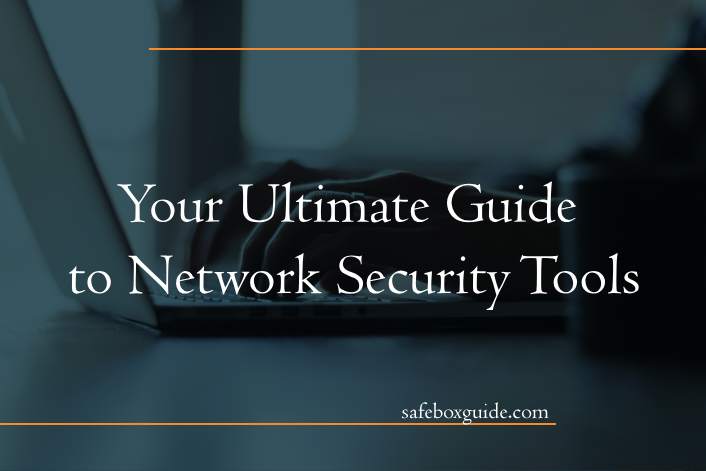In today’s digital landscape, network security is of paramount importance. As businesses and individuals rely heavily on networks for communication, transactions, and data storage, protecting sensitive information from cyber threats is crucial. Network security tools play a vital role in safeguarding networks and preventing unauthorized access, data breaches, and other cyber attacks. In this comprehensive guide, we will explore various network security tools, their functionalities, and how they can enhance your digital defense.

Contents
1. Firewall
Firewalls act as the first line of defense by monitoring and controlling incoming and outgoing network traffic. They filter data packets based on predefined rules, allowing or blocking traffic based on factors like IP addresses, ports, and protocols. Firewalls can be implemented at the network level (hardware firewalls) or the software level (software firewalls) and play a crucial role in protecting against unauthorized access and malware.
2. Intrusion Detection System (IDS) and Intrusion Prevention System (IPS)
IDS and IPS tools monitor network traffic and identify suspicious or malicious activity. IDS detects potential security breaches by analyzing patterns, signatures, and anomalies, while IPS goes a step further by actively blocking or mitigating the detected threats. These tools provide real-time monitoring, alerting system administrators to potential intrusions and enabling quick response and remediation.
3. Virtual Private Network (VPN)
A VPN encrypts network traffic, creating a secure and private connection over a public network. By routing internet traffic through a remote server and encrypting data, VPNs protect sensitive information from interception. There are different VPN types commonly used for secure remote access, safeguarding data during communication between remote locations, and maintaining privacy when connected to public Wi-Fi networks.
4. Antivirus and Anti-Malware Software
Antivirus and anti-malware tools are designed to detect, prevent, and remove malicious software, including viruses, worms, Trojans, and spyware. These tools regularly scan files, programs, and systems for known malware signatures and suspicious behavior, helping to keep networks protected from various types of threats. It is essential to keep antivirus software up to date and regularly perform system scans for optimal protection.
5. Data Loss Prevention (DLP)
DLP tools aim to prevent the unauthorized leakage or loss of sensitive data analytics. They monitor network traffic, identify sensitive data patterns, and enforce policies to prevent data breaches. DLP tools often include features such as encryption, access controls, and activity monitoring to ensure data security and compliance with regulatory requirements.

6. Vulnerability Scanners
Vulnerability scanners assess network systems, applications, and devices to identify security weaknesses or vulnerabilities. They scan for known vulnerabilities, misconfigurations, and potential entry points for attackers. By identifying and prioritizing vulnerabilities, businesses can take proactive measures to patch or mitigate them before they are exploited.
7. Security Information and Event Management (SIEM)
SIEM tools collect and analyze log data from various network devices and systems to detect security incidents, monitor network activity, and provide real-time threat intelligence. SIEM solutions correlate and analyze data from multiple sources, allowing security teams to identify patterns, detect anomalies, and respond promptly to potential threats.
8. Web Application Firewalls (WAF)
WAFs are specifically designed to protect web applications from common web-based attacks, such as SQL injection, cross-site scripting (XSS), and cross-site request forgery (CSRF). By inspecting and filtering web traffic, WAFs provide an additional layer of protection to web applications, mitigating potential risks and vulnerabilities.
9. Encryption Tools
Encryption tools transform data into an unreadable format, ensuring its confidentiality and integrity. By encrypting sensitive information, such as passwords, financial data, and communication channels, businesses can prevent unauthorized access and data breaches. Encryption tools are crucial for protecting data both at rest and in transit.
10. Network Monitoring Tools
Network monitoring tools provide visibility into network traffic, performance, and device status. They help identify network anomalies, monitor bandwidth utilization, detect unauthorized devices, and troubleshoot network issues. Network monitoring tools play a significant role in identifying potential security threats and ensuring the smooth functioning of network infrastructure.
Network security tools are essential components of a comprehensive cybersecurity strategy. By implementing the right combination of tools, businesses, and individuals can enhance their digital defense, protect sensitive information, and mitigate the risk of cyber threats. It is crucial to regularly update and maintain these tools, stay informed about the latest threats and vulnerabilities, and adopt best practices to ensure a robust and secure network environment. Remember, network security is an ongoing process that requires constant vigilance and adaptation to emerging threats.

